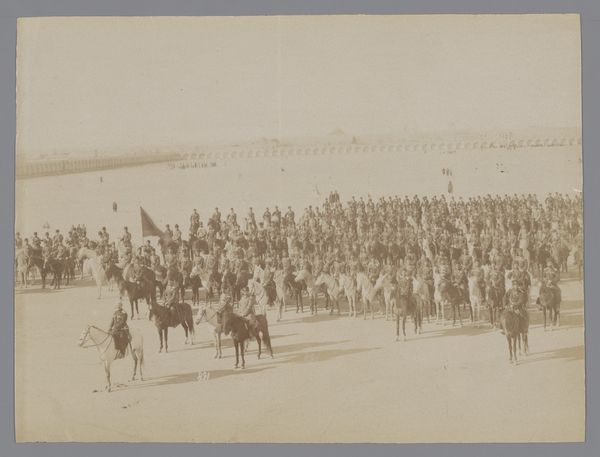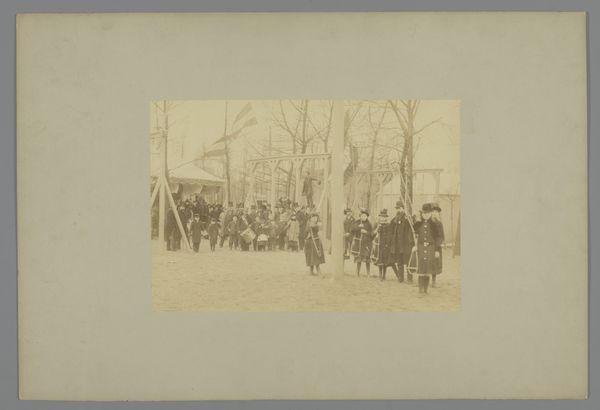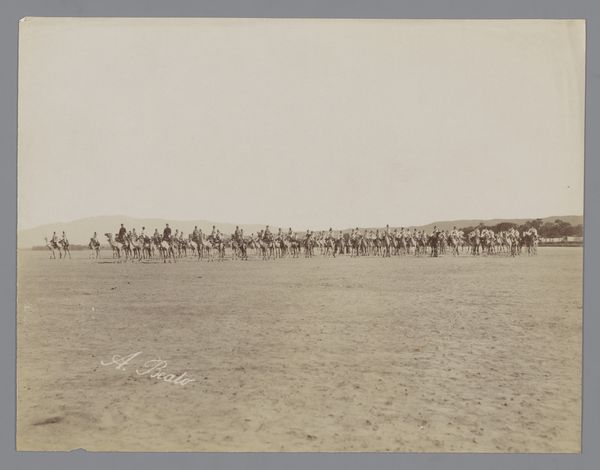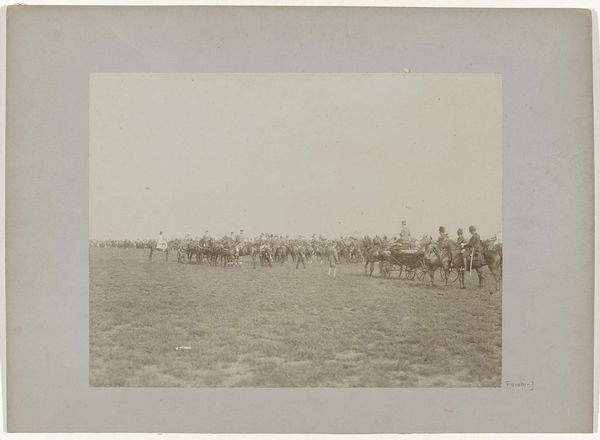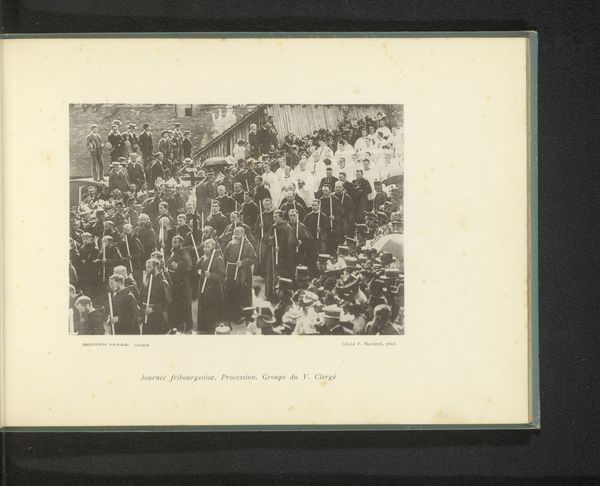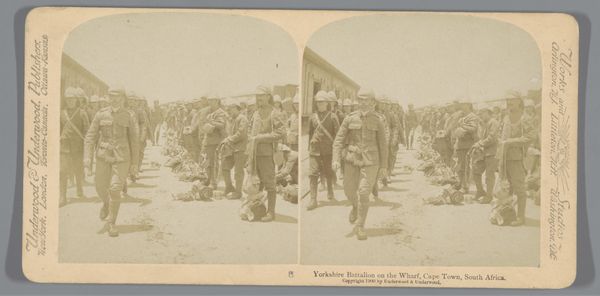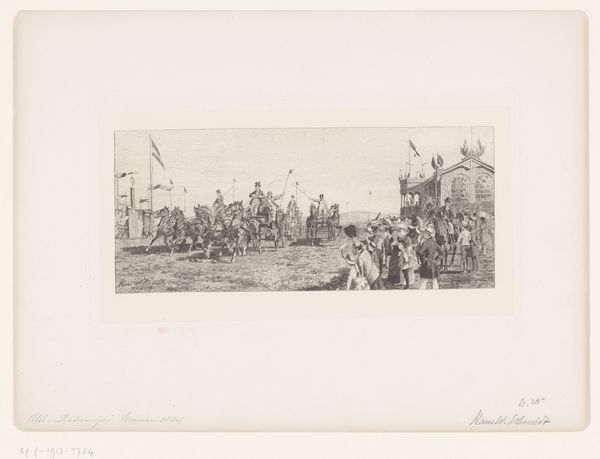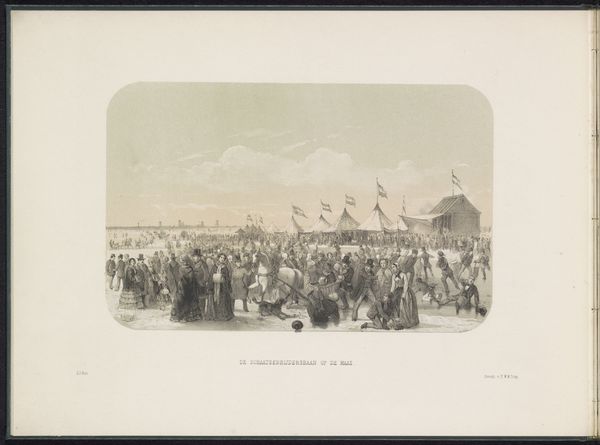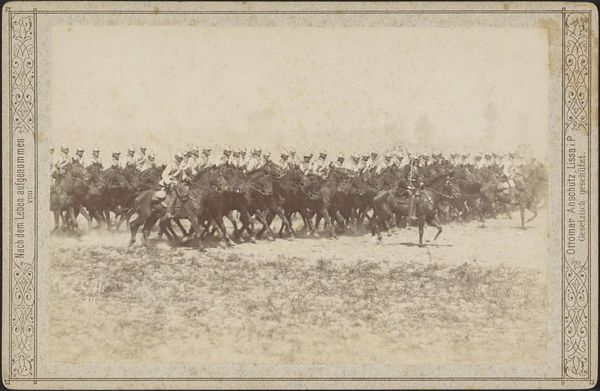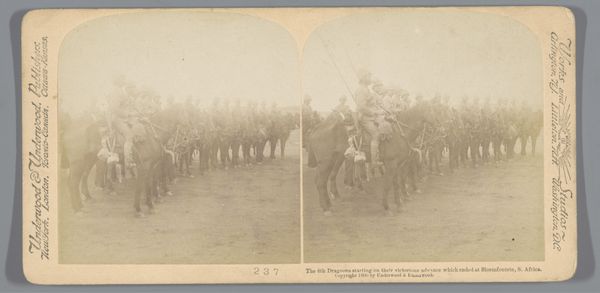
Groepsportret van leden van het Amsterdamsch Studenten Corps op pony's op het strand c. 1897
0:00
0:00
photography
#
photography
#
genre-painting
#
realism
Dimensions: height 164 mm, width 226 mm
Copyright: Rijks Museum: Open Domain
Curator: The photograph before us, "Groepsportret van leden van het Amsterdamsch Studenten Corps op pony's op het strand," attributed to Nicolaas Schuitvlot around 1897, gives me this curious feeling of time suspended. The vast, neutral tones wash over the landscape. It’s at the Rijksmuseum. Editor: What strikes me is the composition’s overwhelming sense of privilege, wouldn’t you say? A phalanx of young, white men arranged rather performatively. There’s an unshakeable undertone of exclusivity in that setting. Curator: Well, yes. But beyond that immediate reaction, I see also a genuine... I don’t know… innocence? The artist captures the youth of the sitters so sweetly. It almost brings back memories of a childhood summer at the shore with my cousins, except ours was much less fancy! There’s light and shadow play here that’s truly delightful. Editor: Childhood innocence in a frame so obviously coded with markers of societal dominance feels almost disingenuous to me. Aren't they literally perched atop symbols of economic power, arranged in what seems like a staging of future leaders? Even the realism here feels constructed, not raw. The artist makes visual their claims to space, position, and resources, don't you agree? Curator: I take your point, but is that the whole story? Consider the beach itself - so exposed and empty. Are they truly claiming something when their little procession can be wiped clean with the tide? The sea offers a quiet commentary to the limits of their authority. There is this fleeting moment, on film, forever memorialized... How they'd change! How society would shift! Editor: The shifting sands of time can't quite erase the legacy of systems they were raised to inherit. To view this simply as a study of fleeting youth feels like a romantic gloss, a failure to account for their active participation in reinforcing societal inequalities. This isn't just realism. It's a visual record of social power. Curator: It's so easy, isn’t it, to view art solely through a lens of right and wrong. In that case, we end up losing something else entirely -- that quiet hum of human potential and the sheer wonder of existence... Editor: And it's also too easy to overlook how aesthetics and power intertwine! Perhaps somewhere between our views lies the truest understanding of this picture, and all the tensions held within it.
Comments
No comments
Be the first to comment and join the conversation on the ultimate creative platform.
